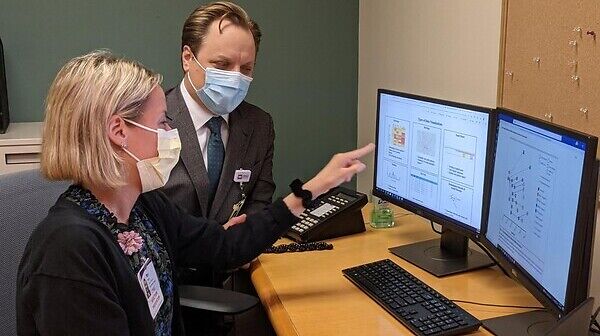
Dream job and publication as first author follow December graduation
Mya Brady (EPI ‘21) knows the value of interprofessional education.
Programs offered by three University of Pittsburgh schools, two academic departments and UPMC helped Brady, an infection preventionist at UPMC Presbyterian and Shadyside Hospitals, to find her perfect niche upon completion of her master’s degree.
“I was always interested in infectious disease and epidemiology,” says Brady, who earned a BS in psychology before matriculating to the School of Public Health through the Pitt2Pitt Program, which offers funding to support students and alumni pursuing graduate and professional degrees.
A class taught by Graham Snyder, MD, MS, associate professor of medicine and medical director of infection prevention and hospital epidemiology, clinched the beginnings of a new career. “Infection prevention and control really opened my eyes to a whole new field that I didn’t know existed,” says Brady. The Snyder connection led to a practicum experience at UPMC Presbyterian Shadyside and an opportunity to work with her mentor and colleagues in Public Health, Medicine, Health Sciences Library, UPMC and the Pittsburgh VA Healthcare System on what became her second-ever publication—this time as first author.
“Transmission Visualization of Healthcare Infection Clusters: A Scoping Review,” was recently published in Antimicrobial Stewardship & Healthcare Epidemiology, an online open-access journal of the Cambridge University Press. A scoping review synthesizes literature on a particular topic or research area to identify key concepts, existing evidence and possible gaps in the research to inform practice, policymaking and education.
Brady and colleagues analyzed 30 publications to ascertain the most common elements used to map infectious disease outbreaks and spread in institutional settings. Of the more than three dozen data visualizations studied, the team found none they felt included all the factors most useful to determine likely transmission pathways. As a result, Brady is working on a data visualization platform that can be used by infection prevention and control specialists at UPMC Presbyterian Shadyside. The group is using COVID-19 data as a basis for the model, which is currently at a very early stage of development.
“This work combines aspects of infectious diseases knowledge and helping people, which is what public health is all about,” says Brady. “It’s perfect.”
8/04/2022